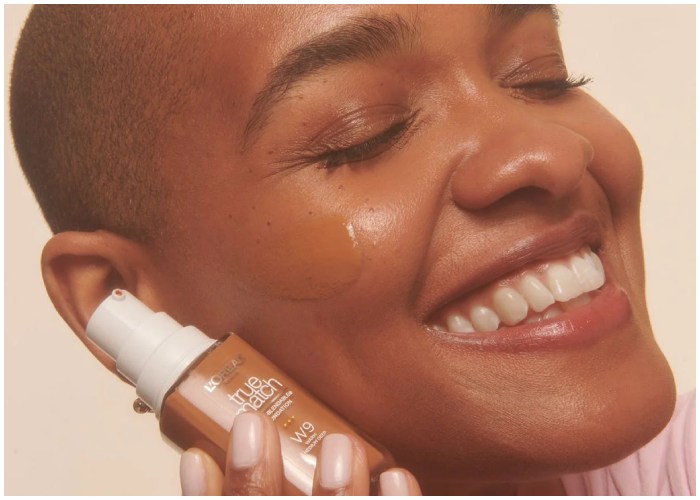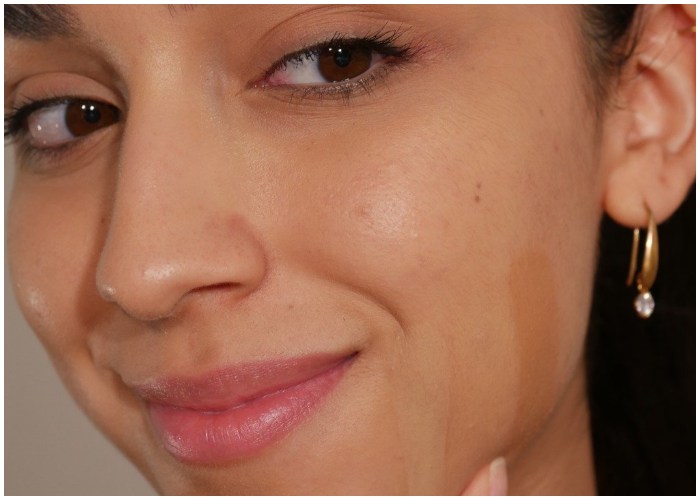Navigating the world of foundations can be daunting, especially when the seemingly perfect shade turns out to be a mismatch once applied. A common pitfall is choosing a foundation with incorrect undertones, which can lead to an unnatural transition from your facial skin to your neck. But with the right knowledge and techniques, you can consistently achieve a seamless and natural foundation match.
Understanding Skin Undertones
The key to a perfect foundation match lies in understanding your skin’s undertones, which influence your overall hue. Skin undertones are categorized into three types: warm, cool, and neutral. Warm undertones often have golden, peachy, or yellow hues, making foundations with similar undertones a good match. Cool undertones feature pink or bluish hints and are complemented by foundations with a pinkish or red base. If your skin seems to be a mixture of both, you likely have neutral undertones, which allow for a wider range of foundation colors.

Methods to Determine Your Undertone
Identifying your undertone can be simple with these methods:
- Jewelry Test: Observe how different metals look against your skin. Silver typically enhances cool undertones, while gold complements warm undertones. If both look equally good, you might have neutral undertones.
- White Fabric Test: Holding a white fabric near your face can reveal your undertone by how it affects your skin’s appearance. Warm tones are enhanced, making the skin look radiant, whereas cool tones might appear more washed out.
- Vein Test: The color of the veins in your wrist can also indicate your undertone. Blue or purple veins suggest cool undertones, greenish veins indicate warm undertones, and if your veins appear to be a mix of blue and green, you are likely neutral.
Choosing and Testing the Right Shade
Once your undertone is determined, finding the right foundation shade becomes easier. Foundation shades are generally available in light, medium, and dark, with variations for undertone. It’s crucial to test foundation shades under natural lighting to see how they blend with your natural skin color. Apply a small amount along your jawline to ensure the color matches both your face and neck.
Adjusting for Seasonal Changes
Your skin tone can change with the seasons due to varying levels of sun exposure. You might need a darker shade during the summer and a lighter one in the winter. Regularly reassessing your foundation match as the seasons change ensures that your foundation always looks natural.

Application Tips for a Flawless Finish
Proper application is crucial for achieving a flawless finish. Start with clean, moisturized skin and apply a primer if desired for longer wear. Use the appropriate tool—such as a brush, sponge, or fingers—depending on the type of foundation and desired coverage. Blend well to avoid harsh lines, paying particular attention to the edges near your ears and neck.
Ensuring Long-Lasting Wear
To ensure your foundation lasts throughout the day without fading or transferring, set it with a suitable setting spray or powder. This step is particularly important if you have oily skin or if you’ll be in a humid environment.
Finding Your Perfect Foundation
Finding the perfect foundation is about more than just color. It’s also important to consider the formula’s compatibility with your skin type, whether it’s oily, dry, or combination, and any skin concerns like sensitivity or acne. Brands like Colorescience offer foundations that not only match your skin tone but also provide skin benefits like hydration, sun protection, and anti-aging properties.
Final Thoughts
With these tips, finding your perfect foundation match is more attainable than ever. Take the time to understand your skin’s needs, experiment with different products, and always check the color in various lighting conditions to ensure the most natural look. Your ideal foundation is out there waiting to enhance your natural beauty while feeling like a second skin.